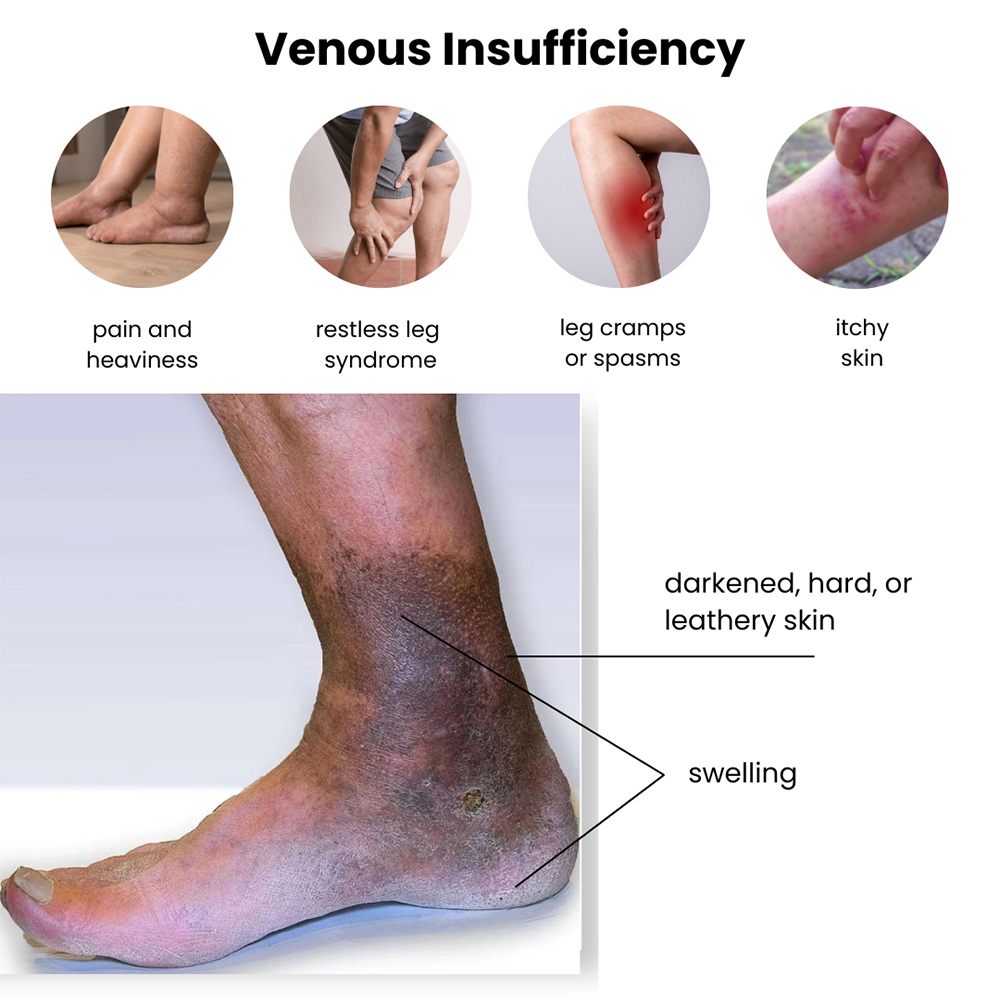Dark spots can appear on your legs for several reasons. For many people, these spots are a cosmetic issue, but persistent brown and black spots or discoloration on the legs accompanied by other symptoms can be a sign of some underlying medical condition. At the Downtown Vein & Vascular Center, top vein doctor Sergei Sobolevsky will evaluate the dark spots on your legs and diagnose what is causing them. He will recommend professional treatment, including laser therapy to get your skin back to its original tone.
Dark spots on legs or skin discoloration can occur for a variety of reasons. Some of these causes are temporary and go away with time on their own. Others may require medical intervention and long-term treatment to clear up.
Dark spots on both legs often result from a skin condition that indicates poor circulation or some underlying metabolic issue. Visit a doctor if you are concerned about persistent dark spots on your legs and ankles and want to know about their possible causes and treatment options.
In most cases, these dark spots are nothing to worry about and fade away with time, but you must have your legs examined by an expert physician to ensure they do not indicate any serious problems.
What Causes Dark Spots on Legs?
There are many causes of dark spots on the legs and feet. They mainly occur when some areas of the skin produce more melanin than usual, the color-producing agent in the body.
Sometimes excessive melanin is produced due to environmental factors, while at times, it could be due to medical disorders.
Common causes of dark spots on legs include:
Sun Burnstrong
Harsh rays of the sun can burn the skin. This damage causes the skin to change its color. Light skin turns red or tan, and dark skin becomes even darker.
Skin also produces melanin, a natural skin pigment, in reaction to the harsh UV radiation from the sun. If your body makes too much melanin, your skin gets darker in case of sunburn.
Post-inflammatory hyperpigmentation
Post-inflammatory hyperpigmentation occurs as a result of trauma such as acne, a scrape, scratch, skin injury, or cut from a sharp object. Acne and trauma cause inflammation that increases the production of melanin in the affected areas, and it leads to the formation of dark spots on the skin.
Diabetes
People suffering from insulin-dependent diabetes are more likely to have problems with insulin production. If the body does not utilize insulin, it begins to accumulate in the bloodstream and leads to the appearance of dark spots.
Melanoma
It is a type of skin cancer that is recognized by dark spots on the legs of women and the faces of men. It mostly appears as a new pigmentation or skin-colored bump.
Sometimes dark spots on the legs are also mistaken for Bowen’s disease, an early form of skin cancer that causes red, scaly patches on the skin.
Age spots
Skin can develop dark-colored spots with age. These spots can result from exposure to the sun, hormonal changes, pregnancy, and long-term use of certain medications.
Addison’s disease
It is a rare problem that results from a disorder of the adrenal glands. It can cause hyperpigmentation on parts of the skin that are frequently exposed to sunlight, especially around scars, skin folds, and joints like knees. You can end up with dark knees and spots on the skin if you suffer from Addison’s disease.
Venous insufficiency
Dark spots on legs that look like bruises can be an early sign of a vein disorder known as chronic venous insufficiency. Venous insufficiency is a condition in which the leg veins do not function properly and are unable to pump blood back to the heart due to weak or damaged venous valves. It causes the blood to pool in the legs leading to brown or reddish spots near the ankles, swelling or bulging, and pain in the lower legs.

Treating dark spots on legs with laser treatment
Laser vein treatment is the most effective way to get rid of dark spots on the legs. Consult your doctor to know more about the causes of dark spots and if they can be removed with laser treatment. You may need more than one session to determine improvement and get rid of these spots for good.
The doctor will use:
- Targeted beams of light that eliminate the layers of the skin
- Targeted beams of light that tighten the skin by promoting collagen growth
The results of laser treatment depend on the type of laser used and the specific reasons behind dark spots.
Read more: The Best Home Remedies for Varicose Veins
Your doctor may use the laser treatment with other restorative options, such as topical skin-lightening therapy to provide lasting relief from discoloration. The doctor can also recommend over-the-counter hydroquinone and corticosteroid creams that reduce the appearance of dark spots. Other treatments include topical creams, chemical peels, and microdermabrasion that help to bring the skin back to its previous tone.
Read more: What Causes Swollen Legs from the Knee Down?
If you are concerned about the growing dark or brownish spots on your legs, do not waste time consulting an experienced and certified doctor to get your condition diagnosed and treated successfully. Leg discoloration is not only unappealing but could turn serious if left untreated. Using the most advanced diagnostic equipment, Dr. Sergei Sobolevsky at the Downtown Vein & Vascular Center offers the most effective solutions to treat dark spots on your legs and prevent further damage. He may combine treatments to achieve the right blend that offers the best relief.


